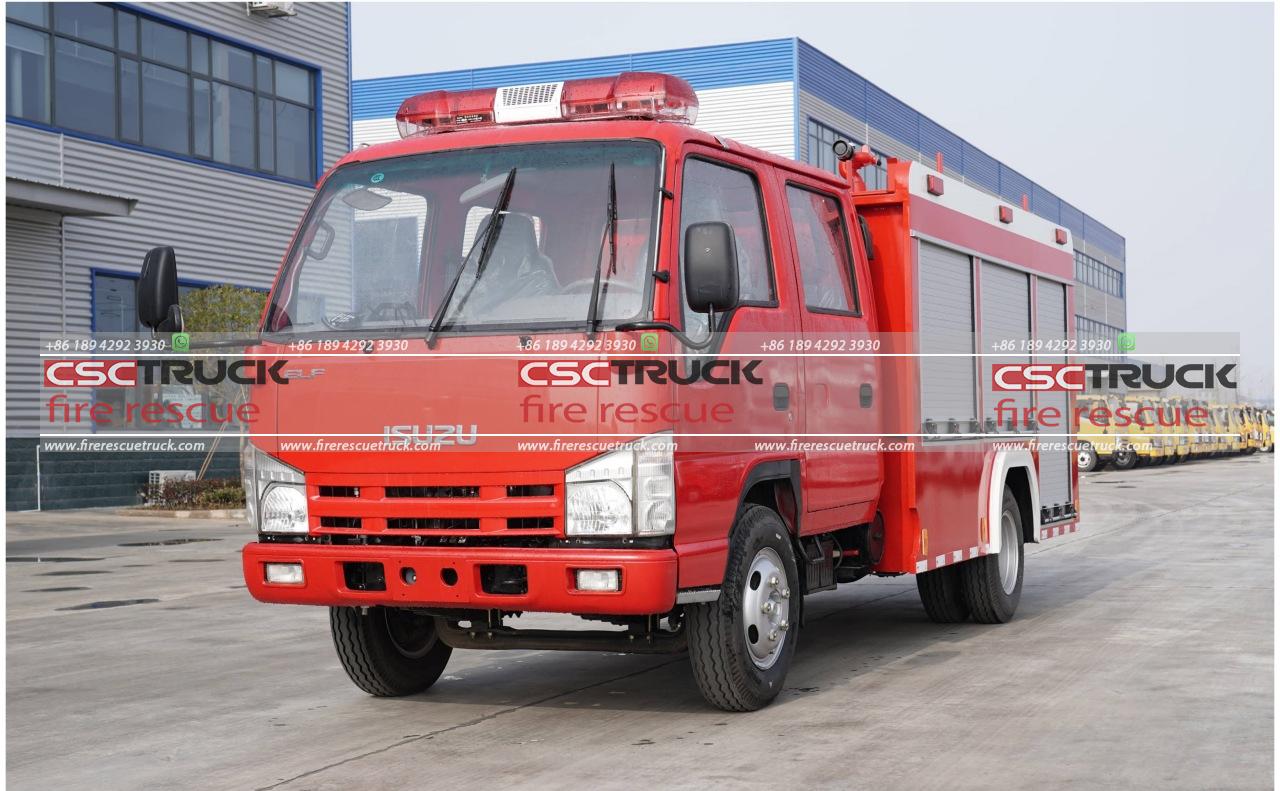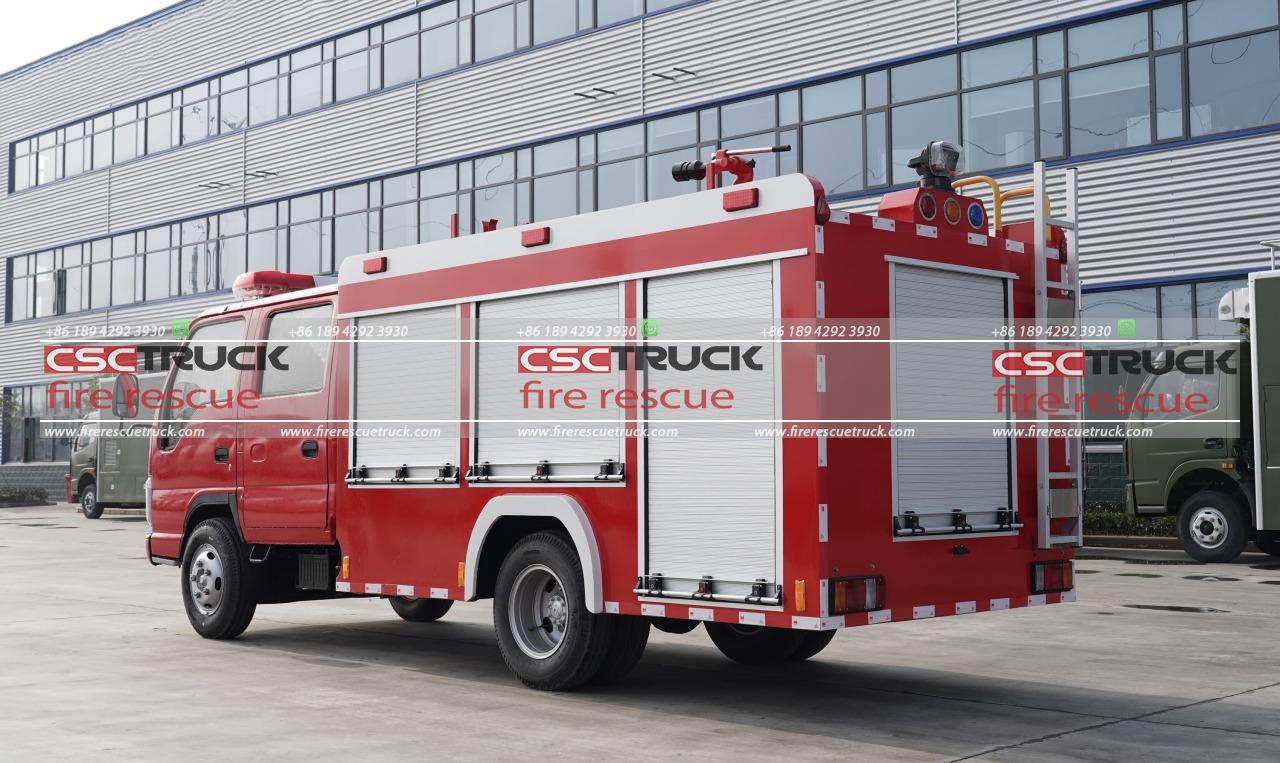In an ever-evolving world where emergencies can strike at any moment, the need for swift, efficient, and technologically advanced rescue vehicles has become paramount. Enter the walk-in rescue truck – a marvel of modern engineering designed to be a mobile command center and lifeline for those in distress. In this article, we delve into the depths of these on-the-go guardians, exploring their features, capabilities, and the invaluable role they play in saving lives.
Introduction to Walk-in Rescue Trucks
Walk-in rescue trucks, also known as walk-in rescue apparatus, are specialized vehicles equipped to respond to a wide range of emergencies, from fires and natural disasters to medical crises and hazardous material incidents. Unlike traditional fire engines or ambulances, these trucks offer a unique advantage: a spacious interior that serves as a command post and workspace for emergency personnel.
The Anatomy of a Walk-in Rescue Truck
At first glance, a walk-in rescue truck may resemble a large boxy vehicle, but its true complexity lies within. These trucks are typically custom-built to meet the specific needs of fire departments, emergency medical services, and other first responders. Let’s take a closer look at some key components:
1. Spacious Interior: The defining feature of a walk-in rescue truck is its walk-in capability, providing ample room for emergency personnel to move freely and perform their duties effectively. The interior layout is carefully designed to accommodate equipment storage, workstations, communication systems, and even medical treatment areas.
2. Equipment Storage: Every inch of space in a walk-in rescue truck is optimized for efficiency. From hydraulic tools and extrication equipment to medical supplies and hazmat gear, these vehicles house a vast array of tools and resources essential for responding to diverse emergencies.
3. Command Center: In the heat of an emergency, effective communication and coordination are crucial. Walk-in rescue trucks serve as mobile command centers, equipped with advanced communication systems, computer workstations, and monitoring devices that enable responders to manage operations with precision and efficiency.
4. Versatile Exterior: While the interior of a walk-in rescue truck is its primary workspace, the exterior is no less important. These vehicles are equipped with external compartments for easy access to equipment, as well as specialized features such as telescoping light towers, winches, and hydraulic ramps for loading and unloading heavy cargo.

The Role of Walk-in Rescue Trucks in Emergency Response
Walk-in rescue trucks play a multifaceted role in emergency response, serving as a vital link between first responders and those in need of assistance. Here are just a few ways in which these vehicles contribute to saving lives:
1. Rapid Deployment: In situations where every second counts, the mobility of walk-in rescue trucks enables rapid deployment to the scene of an emergency. Whether it’s a structure fire, a traffic accident, or a natural disaster, these vehicles can navigate through congested streets and rough terrain to reach those in need.
2. On-Site Command and Control: Once on the scene, walk-in rescue trucks become the nerve center of operations. Emergency personnel can establish command, assess the situation, and deploy resources as needed quickly, all from the convenience of the vehicle’s interior.
3. Technical Rescue Capabilities: From vehicle extrication and high-angle rescues to confined space operations and water rescues, walk-in rescue trucks are equipped to handle a wide range of technical rescue scenarios. With specialized equipment and highly trained personnel on board, these vehicles provide a critical lifeline for individuals in perilous situations.
4. Medical Support: In addition to their role in firefighting and technical rescue, walk-in rescue trucks often serve as advanced life support units, equipped with medical supplies, oxygen, defibrillators, and other essential equipment for treating injured or ill patients on the scene.
Innovation Driving Progress
As technology continues to advance, so too do the capabilities of walk-in rescue trucks. Manufacturers are constantly pushing the boundaries of innovation to enhance performance, efficiency, and safety. Some of the latest advancements in walk-in rescue technology include:
1. Integrated Sensor Systems: Advanced sensor systems and telemetry capabilities enable real-time monitoring of environmental conditions, vehicle performance, and occupant safety, allowing responders to make informed decisions in high-pressure situations.
2. Enhanced Communication Platforms: With the rise of interconnected devices and digital communication networks, walk-in rescue trucks are evolving into fully integrated command and control centers, enabling seamless coordination between multiple agencies and responders.
3. Autonomous Features: While human intervention remains essential in emergency response, autonomous features such as collision avoidance systems and remote-controlled drones are being integrated into walk-in rescue trucks to enhance safety and situational awareness.
4. Green Technologies: To reduce emissions and environmental impact, manufacturers are exploring alternative fuel options and incorporating energy-efficient technologies such as hybrid powertrains and solar panels into walk-in rescue trucks.

Conclusion
Walk-in rescue trucks represent the pinnacle of innovation and ingenuity in the field of emergency response. With their spacious interiors, advanced equipment, and versatile capabilities, these vehicles are true lifelines for communities around the world. As technology continues to evolve and new challenges arise, walk-in rescue trucks will undoubtedly remain at the forefront of on-the-go guardianship, ready to answer the call of duty whenever and wherever it may come.







